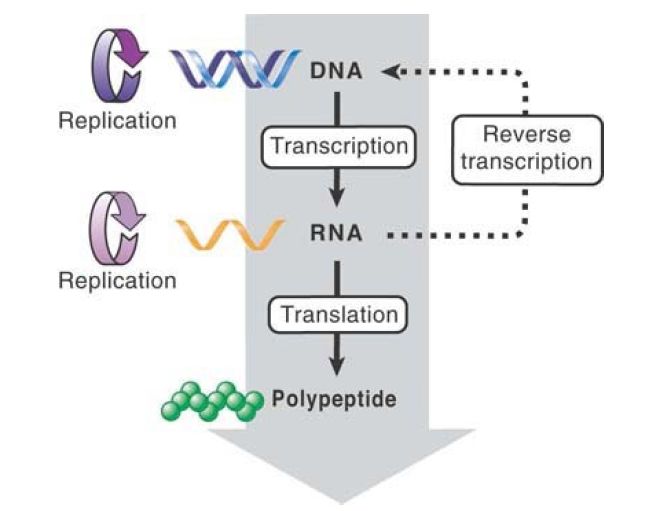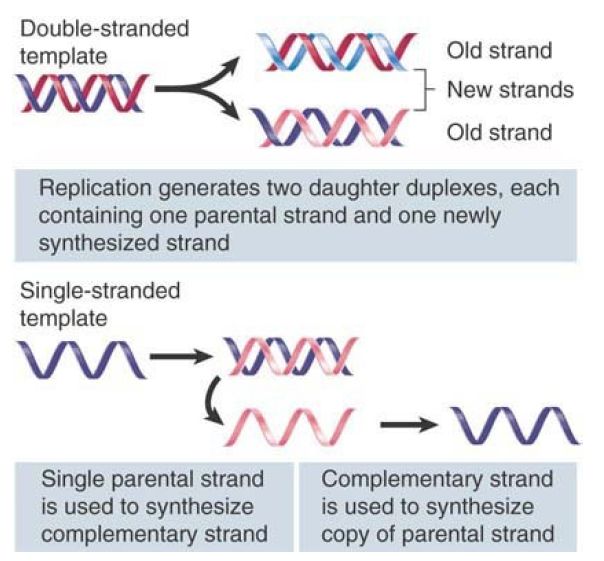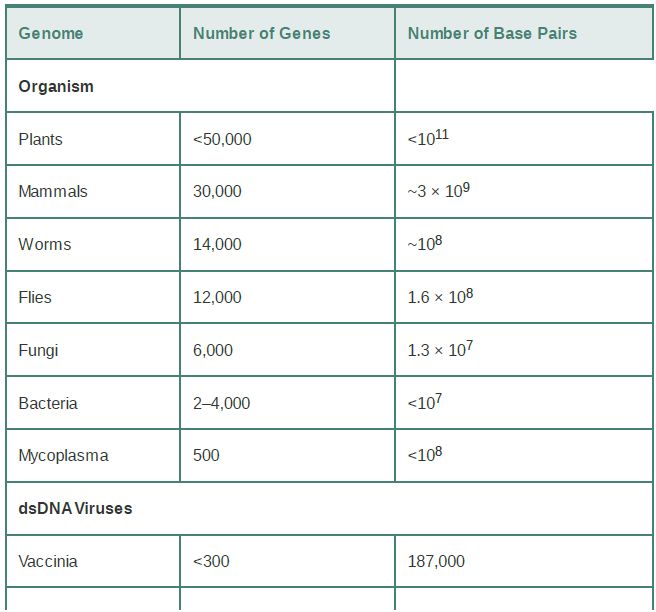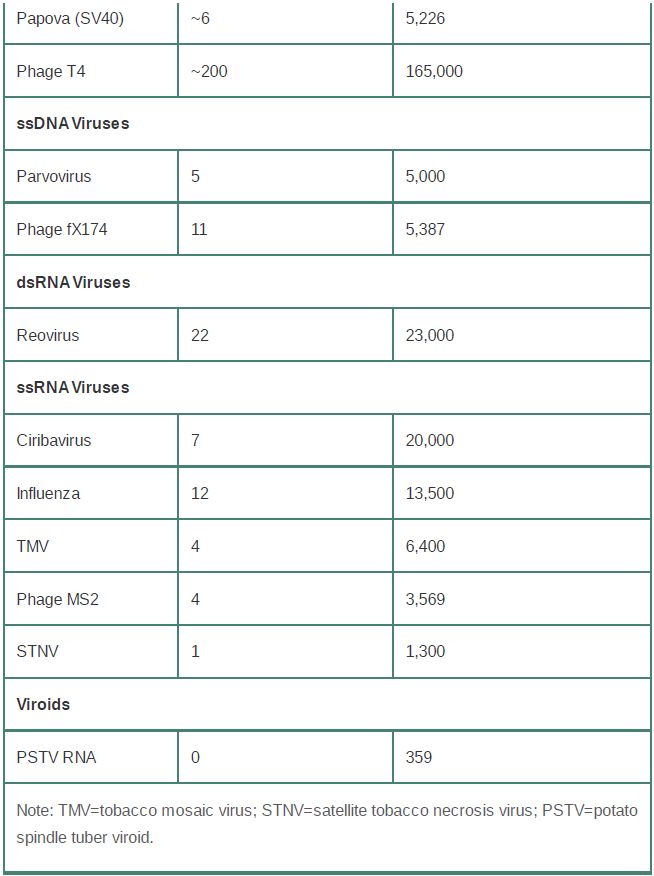

النبات

مواضيع عامة في علم النبات

الجذور - السيقان - الأوراق

النباتات الوعائية واللاوعائية

البذور (مغطاة البذور - عاريات البذور)

الطحالب

النباتات الطبية


الحيوان

مواضيع عامة في علم الحيوان

علم التشريح

التنوع الإحيائي

البايلوجيا الخلوية


الأحياء المجهرية

البكتيريا

الفطريات

الطفيليات

الفايروسات


علم الأمراض

الاورام

الامراض الوراثية

الامراض المناعية

الامراض المدارية

اضطرابات الدورة الدموية

مواضيع عامة في علم الامراض

الحشرات


التقانة الإحيائية

مواضيع عامة في التقانة الإحيائية


التقنية الحيوية المكروبية

التقنية الحيوية والميكروبات

الفعاليات الحيوية

وراثة الاحياء المجهرية

تصنيف الاحياء المجهرية

الاحياء المجهرية في الطبيعة

أيض الاجهاد

التقنية الحيوية والبيئة

التقنية الحيوية والطب

التقنية الحيوية والزراعة

التقنية الحيوية والصناعة

التقنية الحيوية والطاقة

البحار والطحالب الصغيرة

عزل البروتين

هندسة الجينات


التقنية الحياتية النانوية

مفاهيم التقنية الحيوية النانوية

التراكيب النانوية والمجاهر المستخدمة في رؤيتها

تصنيع وتخليق المواد النانوية

تطبيقات التقنية النانوية والحيوية النانوية

الرقائق والمتحسسات الحيوية

المصفوفات المجهرية وحاسوب الدنا

اللقاحات

البيئة والتلوث


علم الأجنة

اعضاء التكاثر وتشكل الاعراس

الاخصاب

التشطر

العصيبة وتشكل الجسيدات

تشكل اللواحق الجنينية

تكون المعيدة وظهور الطبقات الجنينية

مقدمة لعلم الاجنة


الأحياء الجزيئي

مواضيع عامة في الاحياء الجزيئي


علم وظائف الأعضاء


الغدد

مواضيع عامة في الغدد

الغدد الصم و هرموناتها

الجسم تحت السريري

الغدة النخامية

الغدة الكظرية

الغدة التناسلية

الغدة الدرقية والجار الدرقية

الغدة البنكرياسية

الغدة الصنوبرية

مواضيع عامة في علم وظائف الاعضاء

الخلية الحيوانية

الجهاز العصبي

أعضاء الحس

الجهاز العضلي

السوائل الجسمية

الجهاز الدوري والليمف

الجهاز التنفسي

الجهاز الهضمي

الجهاز البولي


المضادات الميكروبية

مواضيع عامة في المضادات الميكروبية

مضادات البكتيريا

مضادات الفطريات

مضادات الطفيليات

مضادات الفايروسات

علم الخلية

الوراثة

الأحياء العامة

المناعة

التحليلات المرضية

الكيمياء الحيوية

مواضيع متنوعة أخرى

الانزيمات
Genetic Information Can Be Provided by DNA or RNA
المؤلف:
JOCELYN E. KREBS, ELLIOTT S. GOLDSTEIN and STEPHEN T. KILPATRICK
المصدر:
LEWIN’S GENES XII
الجزء والصفحة:
25-2-2021
2824
Genetic Information Can Be Provided by DNA or RNA
KEY CONCEPTS
-Cellular genes are DNA, but viruses can have genomes of RNA.
-DNA is converted into RNA by transcription, and RNA can be converted into DNA by reverse transcription.
-The translation of RNA into polypeptide is unidirectional.
The central dogma describing the expression of genetic information from DNA to RNA to polypeptide is the dominant paradigm of molecular biology. Structural genes exist as sequences of nucleic acid but function by being expressed in the form of polypeptides. Replication makes possible the inheritance of genetic information, whereas transcription and translation are responsible for its expression to another form.
FIGURE 1. illustrates the roles of replication, transcription, and translation in the context of the so-called central dogma:

FIGURE 1. The central dogma states that information in nucleic acid can be perpetuated or transferred, but the transfer of information into a polypeptide is irreversible.
Transcription of DNA by a DNA-dependent RNA polymerase generates RNA molecules. mRNAs are translated to polypeptides. Other types of RNA, such as rRNAs and tRNAs, are functional themselves and are not translated.
A genetic system might involve either DNA or RNA as the genetic material. Cells use only DNA. Some viruses use RNA, and replication of viral RNA by an RNA-dependent RNA polymerase occurs in cells infected by these viruses.
The expression of cellular genetic information is usually unidirectional. Transcription of DNA generates RNA molecules; the exception is the reverse transcription of retroviral RNA to DNA that occurs when retroviruses infect cells (discussed shortly). Generally, polypeptides cannot be retrieved for use as genetic information; translation of RNA into polypeptide is always irreversible.
These mechanisms are equally effective for the cellular genetic information of prokaryotes or eukaryotes and for the information carried by viruses. The genomes of all living organisms consist of duplex DNA. Viruses have genomes that consist of DNA or RNA, and there are examples of each type that are double-stranded (dsDNA or dsRNA) or single-stranded (ssDNA or ssRNA). Details of the mechanism used to replicate the nucleic acid vary among viruses, but the principle of replication via synthesis of complementary strands remains the same, as illustrated in FIGURE 2.

FIGURE 2. Double-stranded and single-stranded nucleic acids both replicate by synthesis of complementary strands governed by the rules of base pairing.
Cellular genomes reproduce DNA by the mechanism of semiconservative replication. Double-stranded viral genomes, whether DNA or RNA, also replicate by using the individual strands of the duplex as templates to synthesize complementary strands.
Viruses with single-stranded genomes use the single strand as a template to synthesize a complementary strand; this complementary strand in turn is used to synthesize its complement (which is, of course, identical to the original strand). Replication might involve the formation of stable double-stranded intermediates or use double-stranded nucleic acid only as a transient stage.
The restriction of a unidirectional transfer of information from DNA to RNA in cells is not absolute. The restriction is violated by the retroviruses, which have genomes consisting of a single-stranded RNA molecule. During the retroviral cycle of infection, the RNA is converted into a single-stranded DNA by the process of reverse transcription, which is accomplished by the enzyme reverse transcriptase, an RNA-dependent DNA polymerase. The resulting ssDNA is in turn converted into a dsDNA. This duplex DNA becomes part of the genome of the host cell and is inherited like any other gene. Thus, reverse transcription allows a sequence of RNA to be retrieved and used as DNA in a cell.
The existence of RNA replication and reverse transcription establishes the general principle that information in the form of either type of nucleic acid sequence can be converted into the other type. In the usual course of events, however, the cell relies on the processes of DNA replication (to copy DNA from DNA), transcription (to copy RNA from DNA), and translation (to use mRNA to direct the synthesis of a polypeptide). On rare occasions though (possibly mediated by an RNA virus), information from a cellular RNA is converted into DNA and inserted into the genome.
Although retroviral reverse transcription is not necessary for the regular operations of the cell, it becomes a mechanism of potential importance when we consider the evolution of the genome. The same principles for the perpetuation of genetic information apply to the massive genomes of plants or amphibians as well as the tiny genomes of mycoplasma and the even smaller genomes of DNA or RNA viruses. TABLE 1.1 presents some examples that illustrate the range of genome types and sizes. The reasons for such variation in genome size and gene number are explored in the chapters titled The Content of the Genome and Genome Sequences and Evolution.
TABLE 1.1 The amount of nucleic acid in the genome varies greatly.


Among the various living organisms, with genomes varying in size over a 100,000-fold range, a common principle prevails: The DNA encodes all of the proteins that the cell(s) of the organism must synthesize and the proteins in turn (directly or indirectly) provide the functions needed for survival. A similar principle describes the function of the genetic information of viruses, whether DNA or RNA: The nucleic acid encodes the protein(s) needed to package the genome and for any other functions in addition to those provided by the host cell that are needed to reproduce the virus. (The smallest virus—the satellite tobacco necrosis virus [STNV]—cannot replicate independently. It requires the presence of a “helper” virus—the tobacco necrosis virus [TNV], which is itself a normally infectious virus.)
 الاكثر قراءة في مواضيع عامة في الاحياء الجزيئي
الاكثر قراءة في مواضيع عامة في الاحياء الجزيئي
 اخر الاخبار
اخر الاخبار
اخبار العتبة العباسية المقدسة

الآخبار الصحية















 قسم الشؤون الفكرية يصدر كتاباً يوثق تاريخ السدانة في العتبة العباسية المقدسة
قسم الشؤون الفكرية يصدر كتاباً يوثق تاريخ السدانة في العتبة العباسية المقدسة "المهمة".. إصدار قصصي يوثّق القصص الفائزة في مسابقة فتوى الدفاع المقدسة للقصة القصيرة
"المهمة".. إصدار قصصي يوثّق القصص الفائزة في مسابقة فتوى الدفاع المقدسة للقصة القصيرة (نوافذ).. إصدار أدبي يوثق القصص الفائزة في مسابقة الإمام العسكري (عليه السلام)
(نوافذ).. إصدار أدبي يوثق القصص الفائزة في مسابقة الإمام العسكري (عليه السلام)


















